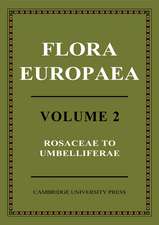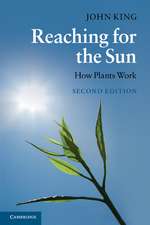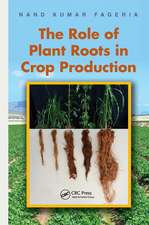Green Planet: How Plants Keep the Earth Alive
Autor Professor Stanley A Riceen Limba Engleză Paperback – 24 feb 2012
2009 Choice Outstanding Academic Title
Plants are not just a pretty part of the landscape; they keep the entire planet, with all of its human and nonhuman inhabitants, alive. Stanley Rice documents the many ways in which plants do this by making oxygen, regulating the greenhouse effect, controlling floods, and producing all the food in the world. Plants also create natural habitats for all organisms in the world. With illustrations and clear writing for non-specialists, Green Planet helps general readers realize that if we are to rescue the Earth from environmental disaster, we must protect wild plants. Beginning with an overview of how human civilization has altered the face of the Earth, particularly by the destruction of forests, the book details the startling consequences of these actions. Rice provides compelling reasons for government officials, economic leaders, and the public to support efforts to save threatened and endangered plants. Global campaigns to solve environmental problems with plants, such as the development of green roofs and the Green Belt Movementùa women's organization in Kenya that empowers communities worldwide to protect the environmentùshow readers that efforts to save wild plants can be successful and beneficial to the economic well-being of nations.
Through current scientific evidence, readers see that plants are vital to the ecological health of our planet and understand what can be done to lead to a betterùand greenerùfuture
Benefits of plants:
Plants are not just a pretty part of the landscape; they keep the entire planet, with all of its human and nonhuman inhabitants, alive. Stanley Rice documents the many ways in which plants do this by making oxygen, regulating the greenhouse effect, controlling floods, and producing all the food in the world. Plants also create natural habitats for all organisms in the world. With illustrations and clear writing for non-specialists, Green Planet helps general readers realize that if we are to rescue the Earth from environmental disaster, we must protect wild plants. Beginning with an overview of how human civilization has altered the face of the Earth, particularly by the destruction of forests, the book details the startling consequences of these actions. Rice provides compelling reasons for government officials, economic leaders, and the public to support efforts to save threatened and endangered plants. Global campaigns to solve environmental problems with plants, such as the development of green roofs and the Green Belt Movementùa women's organization in Kenya that empowers communities worldwide to protect the environmentùshow readers that efforts to save wild plants can be successful and beneficial to the economic well-being of nations.
Through current scientific evidence, readers see that plants are vital to the ecological health of our planet and understand what can be done to lead to a betterùand greenerùfuture
Benefits of plants:
- Help modulate greenhouse gases
- Produce almost all oxygen in the air
- Create cool shade that reduces energy costs
- Prevent floods, droughts, and soil erosion
- Produce all of the food in the world
- Create and preserve soil
- Create natural habitats
- Heal the landscape after natural and human disasters
Preț: 213.77 lei
Nou
Puncte Express: 321
Preț estimativ în valută:
40.92€ • 44.46$ • 34.39£
40.92€ • 44.46$ • 34.39£
Carte tipărită la comandă
Livrare economică 21 aprilie-05 mai
Livrare express 14-20 martie pentru 31.51 lei
Preluare comenzi: 021 569.72.76
Specificații
ISBN-13: 9780813553542
ISBN-10: 0813553547
Pagini: 314
Ilustrații: 38 illustrations
Dimensiuni: 152 x 229 x 20 mm
Greutate: 0.45 kg
Ediția:First Paperback Edition
Editura: Rutgers University Press
Colecția Rutgers University Press
ISBN-10: 0813553547
Pagini: 314
Ilustrații: 38 illustrations
Dimensiuni: 152 x 229 x 20 mm
Greutate: 0.45 kg
Ediția:First Paperback Edition
Editura: Rutgers University Press
Colecția Rutgers University Press
Notă biografică
STANLEY A. RICE is a professor of plant biology at Southeastern Oklahoma State University. He is the author of the Encyclopedia of Evolution and Life of Earth: Portrait of a Beautiful, Middle-Aged, Stressed-Out World.
Recenzii
"The title says it all. Green Planet does for plants what Diane Ackerman's A Natural History of the Senses does for our sensory experiences."
"If you are not convinced of the critical value of plants to people you will be after reading Stanley Rice's Green Planet. Rice's expertise, paired with his engaging style, awakens readers to the importance of the environmental services provided by plants."
"Stanley Rice writes with charm and clarity. Not since Corner's Life of Plants has there been a contestant for this role in the world of scientific publishing about plants for general readers."
"An intriguing and deeply passionate account of how plants keep us all alive. Rice explores the numerous ways that plants sustain life in ways more surprising and captivating than anything you'll remember from school. Green Planet explains the nature of plants on a far deeper level. It's fascinating, and more interconnected to all the economic and ecological concerns of today than most recognize."
"The ecosystems of the planet that humans depend on for fresh air, water, and food are increasingly stressed. The fact that green plants are at the functional core of these ecosystems is not generally appreciated, and the point is clearly and concisely made in this book by Rice. This work is notable for its breadth of coverage of not only how plants directly affect humans but also of how plants affect the functioning of the ecosystems that humans need for a range of goods and services. Highly recommended."
Descriere
Beginning with an overview of how human civilization has altered the face of the Earth, particularly by the destruction of forests, the book details the startling consequences of these actions. Rice provides compelling reasons for government officials, economic leaders, and the public to support efforts to save threatened and endangered plants. This book was named 2009 Choice Outstanding Academic Title of the year.










